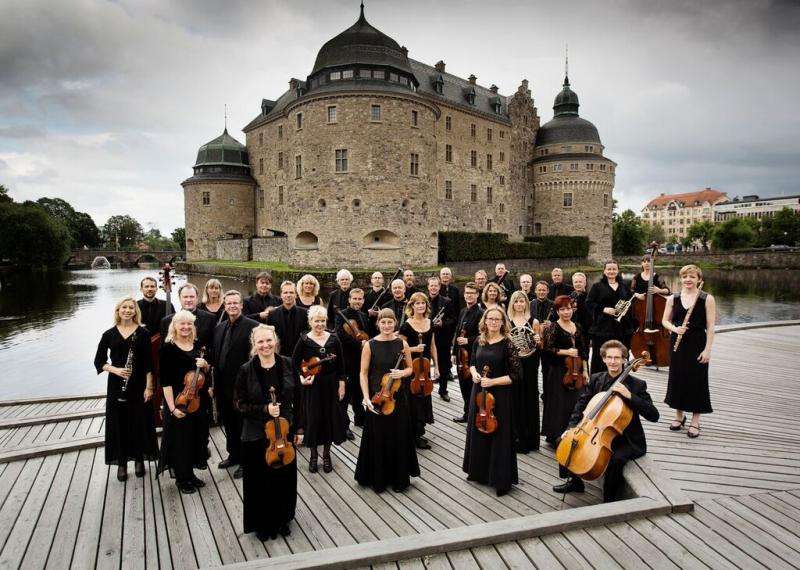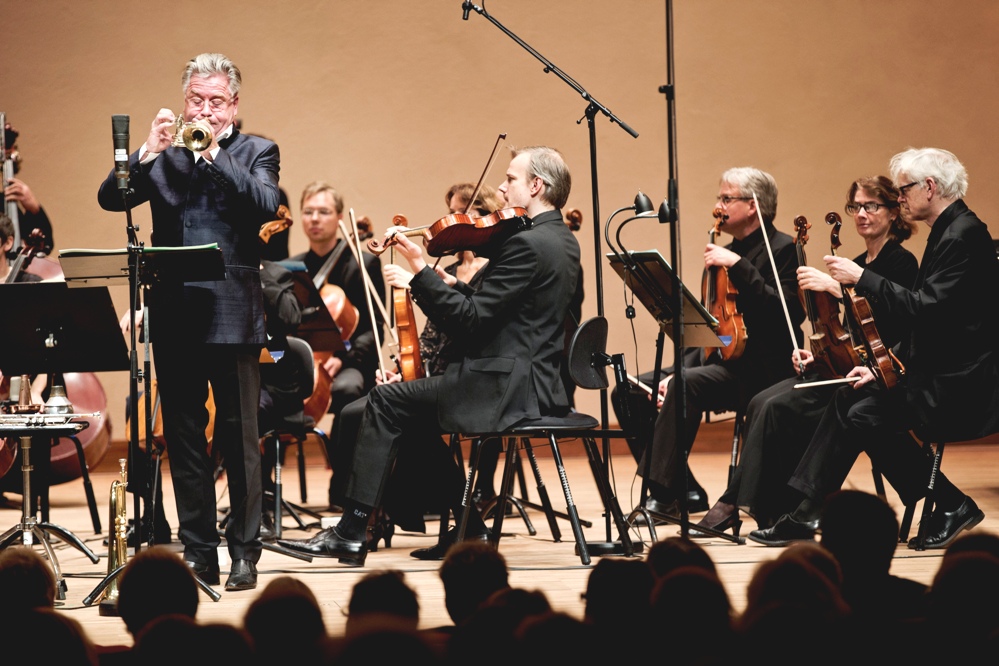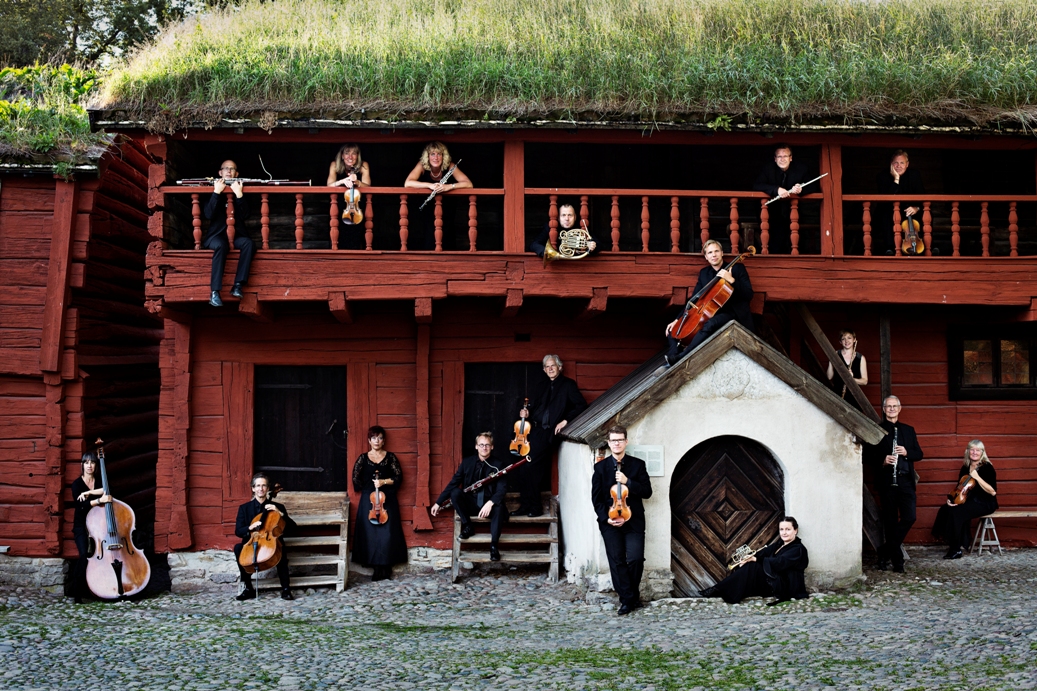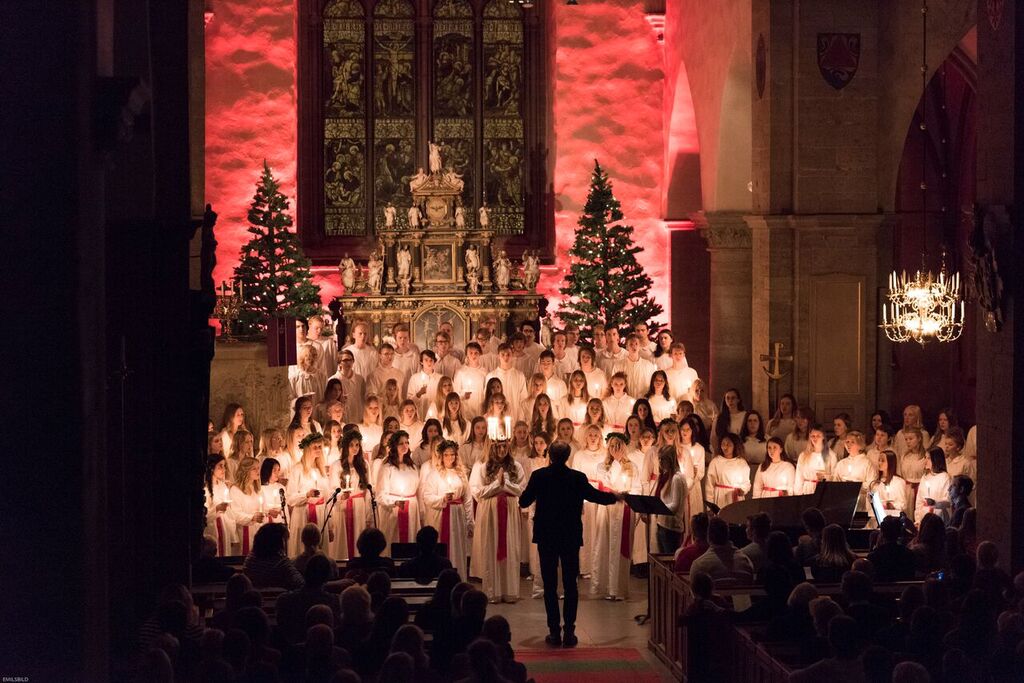theartsdesk in Örebro: Brandenburgs plus | reviews, news & interviews
theartsdesk in Örebro: Brandenburgs plus
theartsdesk in Örebro: Brandenburgs plus
Homages to Bach and Santa Lucia in a delightful Swedish town

In 1981 a 20-year-old Swedish trumpeter on national service turned up in the town – city, by Swedish reckoning – of Örebro as soloist in Bach’s Second Brandenburg Concerto.
It was a bright opening fanfare to an ambitious project, pairing each Brandenburg Concerto with a new work. Mackey’s homage, with the soloist switching between piccolo trumpet, flugelhorn and trumpet in C true to the “three-horned” title of the piece, had shape as well as shapes, identifiable musical ones, sufficient to make one want to hear the work again (pictured below, Hardenberger and the SCO in action). In the second half, the Fifth Brandenburg Concerto saw that great maverick Uri Caine, pioneer in CD variations and riffs on Beethoven and Mahler inter alia, nimble on the harpsichord before switching to his favoured piano in Khamsa, the verbal play on the title’s number five in Arabic multilayered like the music, a typically playful take on the Bach in the first movement, complete with dizzying improvised cadenza. That was vintage Caine, before a slow movement of aimless doodles and a finale that outstayed its welcome. This time, quotations from the original pepper the outer movements.

Despite any shortcomings, the adventures all have to be made and take their chances, and the fascination of the project, due to be completed in 2018, will be who succeeds and who fails, exactly what the mélange of styles will yield in this refreshingly post-modern era. The future looks very bright indeed, though, with works to come from Mark Anthony Turnage, Anders Hillborg, Olga Neuwirth and Brett Dean. Brains behind the scheme, nine years in the making, is the SCO’s Music Director, oboist and animateur extraordinary Gregor Zubicky. He’s been working on “the Brandenburg Project” for nearly a decade, and it’s finally taken off before going on tour – most significantly to Potsdam outside Berlin – with the other four new works to be added over time.
It has to be said that despite a packed auditorium for an official inauguration, this was work in progress. Recording sessions scheduled for the day after the concert had been postponed, and Thomas Dausgaard, the Swedish Chamber Orchestra’s very engaging and enterprising chief conductor since 1997, was leaving first thing in the morning, so interview and session report went out of the window. One wonders in any case if the engineers could have done much with provisional acoustics.
The Konserthus, a real asset to a city of around 140,000 people, was built in the early 1930s and now finds itself in the closing stages of a smart refurbishment, liberating and adding much more space. While this has meant the luxury for players of a dressing room each, there are problems with the new auditorium. The old one is reported to have been dry and hard; now the sound is plummy and dulling, double-basses muddying the waters and the orchestral soloists – flautist Fiona Kelly, oboist Lisa Almberg and cellist Katarina Andreasson, all excellent – sounding reticent, especially alongside the clarion sound of Hardenberger’s piercing trumpet. Acoustic banners, due to arrive shortly, had better make a difference or the SCO is in a bit of trouble.

A day in Örebro bereft of the sessions proved easy to fill. The citizens are extraordinarily courteous and naturally friendly – not your stereotypes of the introverted Swede at all – and that includes a Syrian shop owner who'd been here for 26 years and was eager to try out conversation with us, proud that his son was now a teacher at the local English Language School.
The town’s strategic position on King Eric’s Way between south-west Sweden and Stockholm has bequeathed it the most romantic of castles right in the centre of town where the river Svartán rushes into – at this time of year, at least – and alongside a splendid moat. The 13th century fortifications was turned into a Renaissance palace by Karl IX and made even more fantastical in the 19th century, long after the castle served any strategic use against the Danes.
Follow the river and a pleasant walk past villas in a weird multiplicity of styles takes you to Wadköping, the fictional name given to Örebro by nationally famous local author Hjalmar Bergman, who used that name for his home town and who has a museum here. Ostensibly Wadköping is an open-air museum like Stockholm's Skansen, with the usual tourist craft shops, but people also live here, and the mostly wooden buildings were transported at the instigation of a public-spirited local in 1965 from the southern part of town to escape demolition. So there’s a feeling of unity. The treasure is the King’s Lodgings, which early photographs reveal as capped by a field of grass even in the early 1900s (pictured above by Nikolaj Lund with members of the SCO interwoven). Cookbook pioneer Kajsa Warg’s “House” (actually her father’s, built in the 17th century) has charming wall and ceiling paintings, and the central café provides that dream of Swedish cosiness with excellent home cooking in low-timbered dining rooms.
Less than an hour after a (late) lunch, the sun set and the lights came on in Wadköping. And that’s a very good reason for visiting any Swedish town in December. No multicoloured garishness for these dwellers in winter darkness: everything is white, lit-up giant stars in every window and candles on brackets and around doors. An illuminated giant goat, traditionally made of straw and covered in pine branches, towers over a central skating rink and we were fortunate to be in Örebro at the time of celebrating Santa Lucia of Syracuse, a saint of light in darkness whose day is 13 December, in the old calendar the winter solstice. The processionals celebrating her arrival were introduced in 1927 and have been an essential part of the tradition ever since.

A large choir from the Karolina School were giving a “Luciakonsert” to raise money for the local Lions in the main church, St Nicolai, essentially a cathedral with the familiarly spare but warm and personal Swedish church interior and a remarkable 17th century carved altarpiece by the German Markus Hebbel, given to the church in 1661. This formed the backdrop to the massed schoolchildren, having processed up the aisle holding candles and singing the traditional Sicilian tune. Santa Lucia herself, dressed like the rest in white with red sashes, appeared in the fourth of the 20 hugely varied numbers brilliantly executed – from memory – wearing the traditional crown of candles. It was all moving to tears. So, while the very special Brandenburg Project can theoretically be tried out any time, anywhere, the hour in St Nicolas turned out to be the real meaning of Örebro just before Christmas.
Explore topics
Share this article
The future of Arts Journalism
You can stop theartsdesk.com closing!
We urgently need financing to survive. Our fundraising drive has thus far raised £49,000 but we need to reach £100,000 or we will be forced to close. Please contribute here: https://gofund.me/c3f6033d
And if you can forward this information to anyone who might assist, we’d be grateful.

Subscribe to theartsdesk.com
Thank you for continuing to read our work on theartsdesk.com. For unlimited access to every article in its entirety, including our archive of more than 15,000 pieces, we're asking for £5 per month or £40 per year. We feel it's a very good deal, and hope you do too.
To take a subscription now simply click here.
And if you're looking for that extra gift for a friend or family member, why not treat them to a theartsdesk.com gift subscription?
more Classical music
 Solomon, OAE, Butt, QEH review - daft Biblical whitewashing with great choruses
Even a top soprano and mezzo can’t make this Handel paean wholly convincing
Solomon, OAE, Butt, QEH review - daft Biblical whitewashing with great choruses
Even a top soprano and mezzo can’t make this Handel paean wholly convincing
 Two-Piano Gala, Kings Place review - shining constellations
London Piano Festival curators and illustrious friends entertain and enlighten
Two-Piano Gala, Kings Place review - shining constellations
London Piano Festival curators and illustrious friends entertain and enlighten
 Echo Vocal Ensemble, Latto, Union Chapel review - eclectic choral programme garlanded with dance
Beautiful singing at the heart of an imaginative and stylistically varied concert
Echo Vocal Ensemble, Latto, Union Chapel review - eclectic choral programme garlanded with dance
Beautiful singing at the heart of an imaginative and stylistically varied concert
 Scott, Irish Baroque Orchestra, Whelan, RIAM, Dublin review - towards a Mozart masterpiece
Characteristic joy and enlightenment from this team, but a valveless horn brings problems
Scott, Irish Baroque Orchestra, Whelan, RIAM, Dublin review - towards a Mozart masterpiece
Characteristic joy and enlightenment from this team, but a valveless horn brings problems
 Classical CDs: Voice flutes, flugelhorns and froth
Baroque sonatas, English orchestral music and an emotionally-charged vocal recital
Classical CDs: Voice flutes, flugelhorns and froth
Baroque sonatas, English orchestral music and an emotionally-charged vocal recital
 Kanneh-Mason, Britten Sinfonia, Shave, Milton Court - a grin and a big beaming smile
A pair of striking contemporary pieces alongside two old favourites
Kanneh-Mason, Britten Sinfonia, Shave, Milton Court - a grin and a big beaming smile
A pair of striking contemporary pieces alongside two old favourites
 theartsdesk at the New Ross Piano Festival - Finghin Collins’ musical rainbow
From revelatory Bach played with astounding maturity by a 22 year old to four-hand jazz
theartsdesk at the New Ross Piano Festival - Finghin Collins’ musical rainbow
From revelatory Bach played with astounding maturity by a 22 year old to four-hand jazz
 First Person: Manchester Camerata's Head of Artistic Planning Clara Marshall Cawley on questioning the status quo
Five days of free events with all sorts of audiences around Manchester starts tomorrow
First Person: Manchester Camerata's Head of Artistic Planning Clara Marshall Cawley on questioning the status quo
Five days of free events with all sorts of audiences around Manchester starts tomorrow
 Goldscheider, Brother Tree Sound, Kings Place review - music of hope from a young composer
Unusual combination of horn, strings and electronics makes for some intriguing listening
Goldscheider, Brother Tree Sound, Kings Place review - music of hope from a young composer
Unusual combination of horn, strings and electronics makes for some intriguing listening
 theartsdesk Q&A: composer Donghoon Shin on his new concerto for pianist Seong-Jin Cho
Classical music makes its debut at London's K-Music Festival
theartsdesk Q&A: composer Donghoon Shin on his new concerto for pianist Seong-Jin Cho
Classical music makes its debut at London's K-Music Festival

Add comment